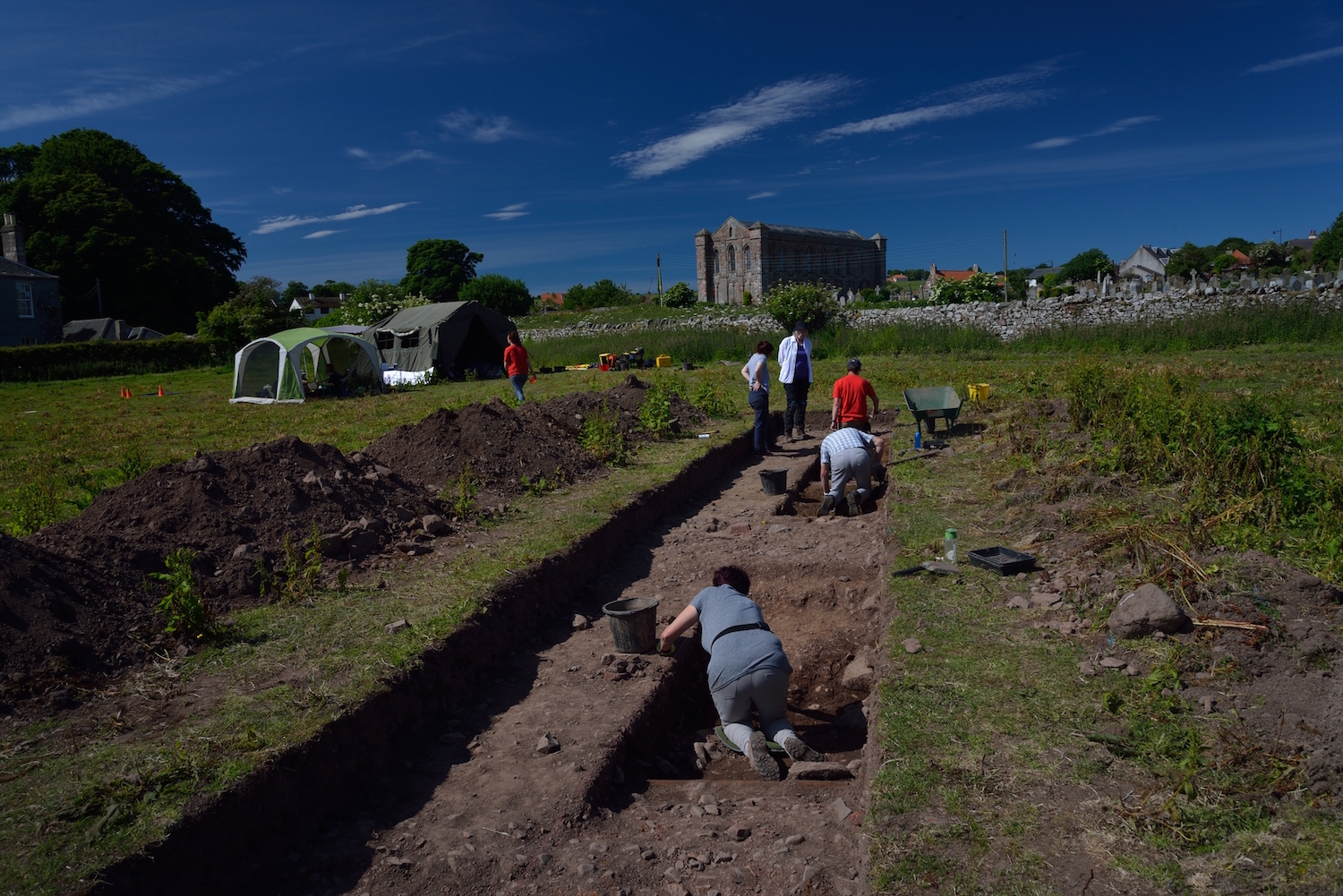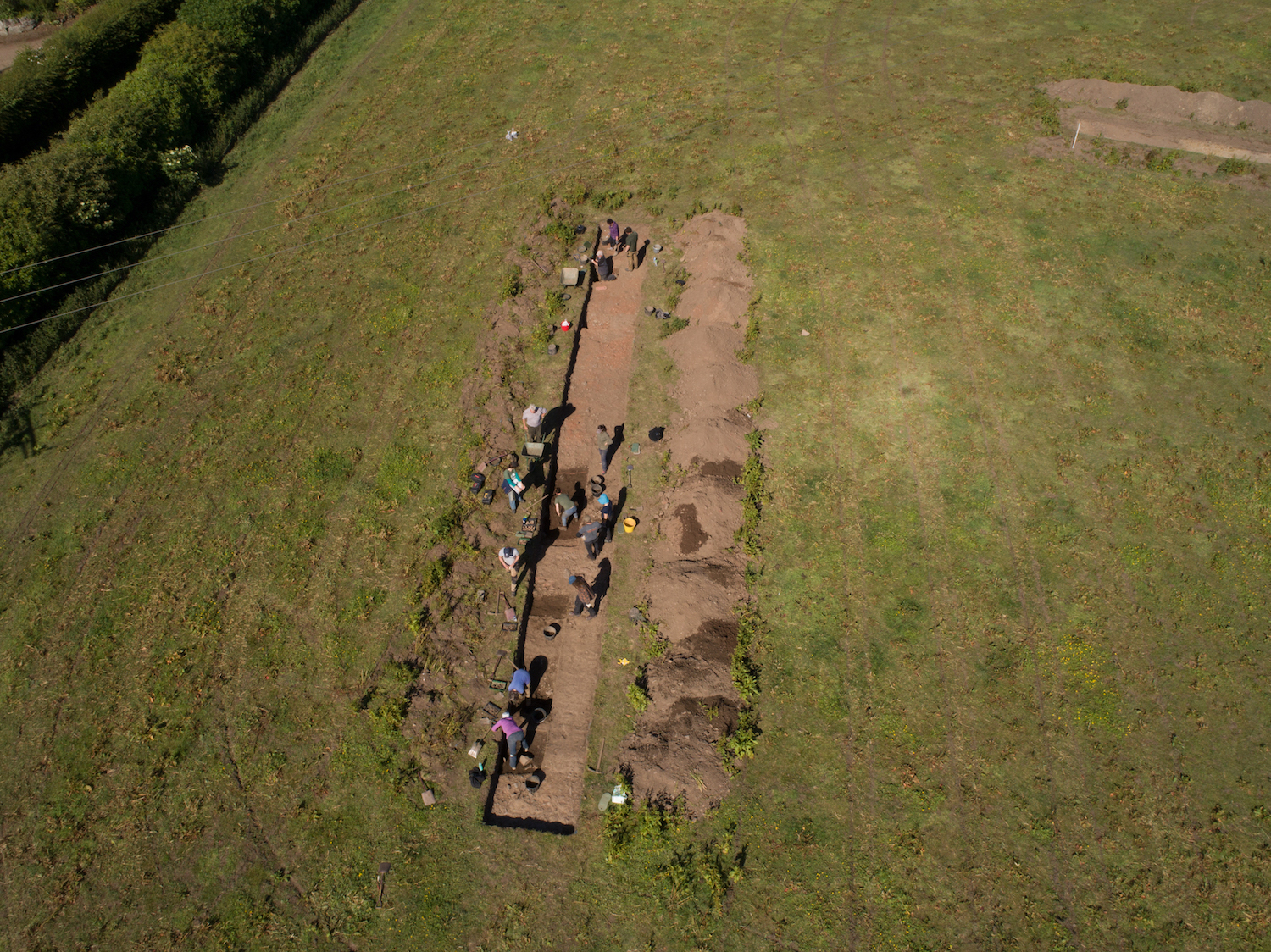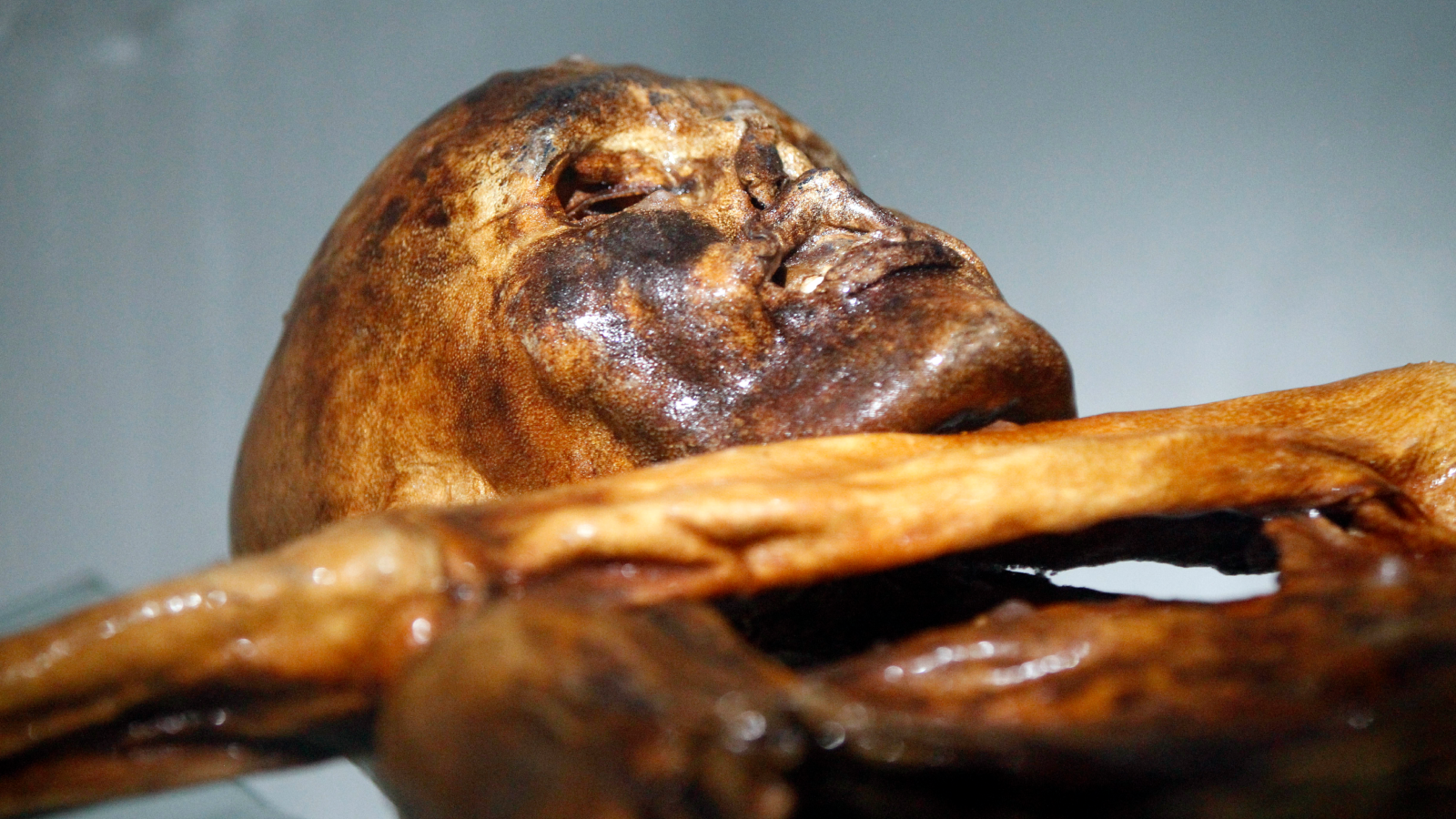Monastery of 7th-Century Scottish Princess (and Saint) Possibly Discovered

Archaeologists and citizen scientists have unearthed what may be the monastery of Princess Aebbe, who was born a pagan but later spread Christianity along the northeastern British coast during the seventh century.
Once the pagan-turned-Christian princess (615-668) became an abbess, she established the monastery at Coldingham, a village in the southeast of Scotland. But the monastery was short-lived; Viking raiders destroyed it it in 870.
Archaeologists have been looking for the remains of this monastery for decades. Excavators have now located a narrow, circular ditch, which is likely the "vallum," or the boundary that surrounded Aebbe's religious settlement, DigVentures, a U.K.-based group led by archaeologists and supported by crowdfunding, announced March 8. Citizen scientists help carry out DigVentures' projects. [In Photos: The UK's Geologic Wonders]
"Vallums weren't necessarily deep, intimidating defensive structures but more like a symbolic marker to show that you were entering a venerated or spiritual place," Maiya Pina-Dacier, the head of community at DigVentures, told Live Science in an email.
Just outside the boundary, the excavation team made another surprising discovery: a giant pile of butchered animal bones, including those from cattle, horses, pigs, sheep, goats, domestic fowl and red deer. These were radiocarbon dated to 664-864, right around the time the monastery would have been up and running.
"This is pretty much exactly when Aebbe's monastery was in existence," Manda Forster, the program manager at DigVentures, said in a statement. "Originally built around A.D. 640, it is said to have burned down shortly after her death but was then rebuilt and thrived until it was destroyed once again by Viking raiders 200 years later."
Previously, other archaeologists searched for the monastery at a cliff-top location in Coldingham, overlooking the sea. But none of these experts could find hard evidence of an extensive, wealthy Anglo-Saxon monastery at this location, Forster said.
Get the world’s most fascinating discoveries delivered straight to your inbox.
The newfound site is farther inland, near the Coldingham Priory (a historical house for Benedictine monks), Forster noted. DigVentures decided to excavate there because this site had outlines of several possible archaeological structures. In addition, several artifacts — including fragments of an Anglo-Saxon belt fitting, fragments of sculpture and possible early Christian burials — had been found there. "And it makes sense that the later Benedictine monastery was built on the site of its Anglo-Saxon predecessor," Forster said.
So far, the excavations indicate that the remains of Aebbe's monastery are probably located under Coldingham Priory. "Aebbe is an extraordinary figure — an example of a powerful Anglo-Saxon woman who played a big part in establishing Christianity in the region during the seventh century," Forster said. "Now that we've got evidence to pinpoint exactly where her monastery was, we can help bring her story back to life."
For instance, scientists know that the princess, who was the daughter of a Northumbrian warlord, fled with her siblings after their father was killed. They went to Dál Riata, a Gaelic kingdom that was a hub of early Christianity. Shortly after arriving, the family abandoned their pagan ways and converted.
When her brother Oswald went to reclaim the Northumbria throne in 635, Aebbe accompanied him, determined to convert their subjects to Christianity. Meanwhile, Oswald created the famous monastery at Lindisfarne, which, just like his sister's monastery, was later raided by Vikings.
In addition to crowdfunding, this DigVentures project was paid for by the U.K. National Lottery Heritage Fund and Friends of Coldingham Priory.
- In Photos: Scotland's Cave of the Dead
- In Photos: Intricately Carved Stone Balls Puzzle Archaeologists
- Photos: Gilded Bronze Age Weaponry from Scotland
Originally published on Live Science.

Laura is the managing editor at Live Science. She also runs the archaeology section and the Life's Little Mysteries series. Her work has appeared in The New York Times, Scholastic, Popular Science and Spectrum, a site on autism research. She has won multiple awards from the Society of Professional Journalists and the Washington Newspaper Publishers Association for her reporting at a weekly newspaper near Seattle. Laura holds a bachelor's degree in English literature and psychology from Washington University in St. Louis and a master's degree in science writing from NYU.
 Live Science Plus
Live Science Plus







